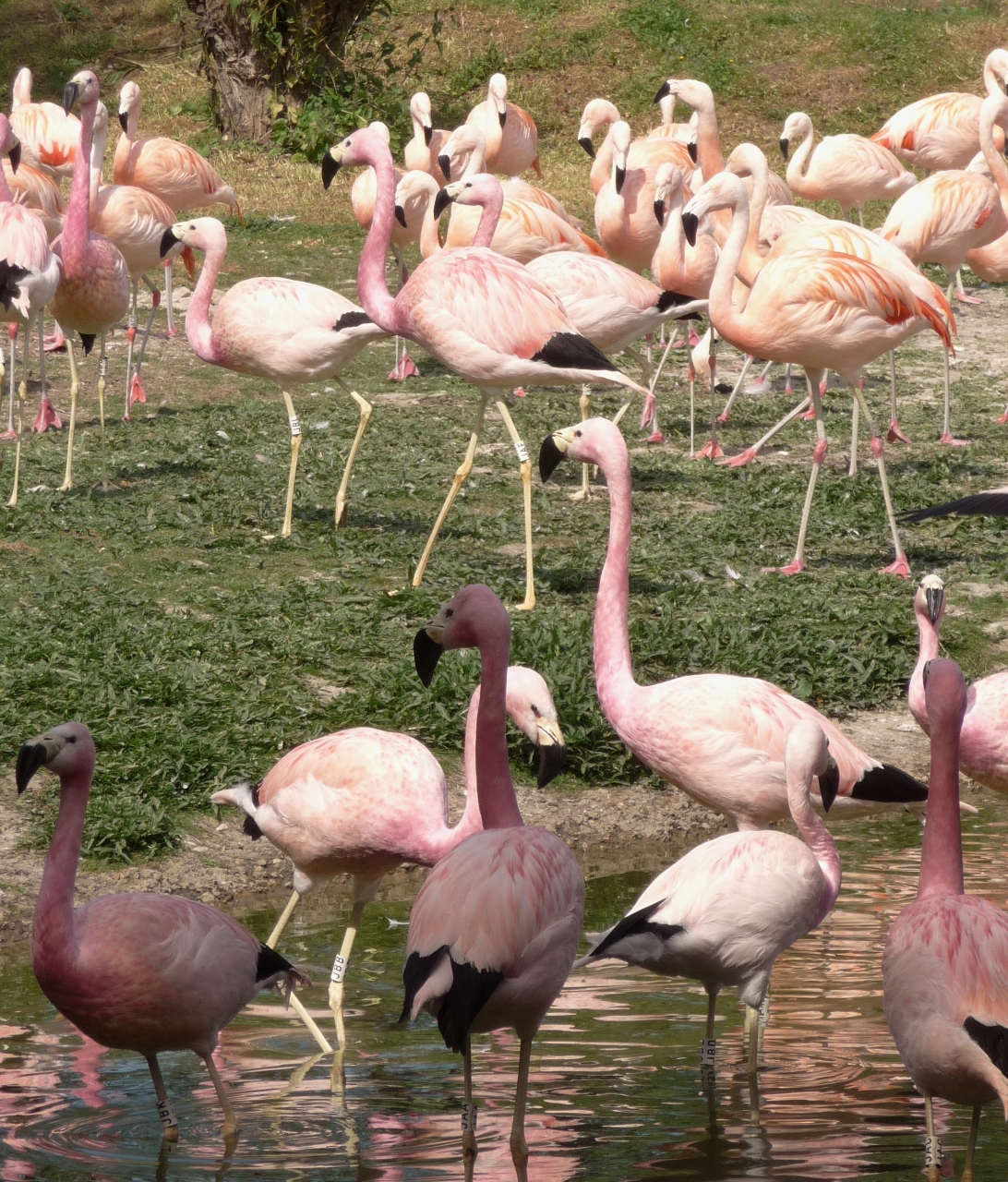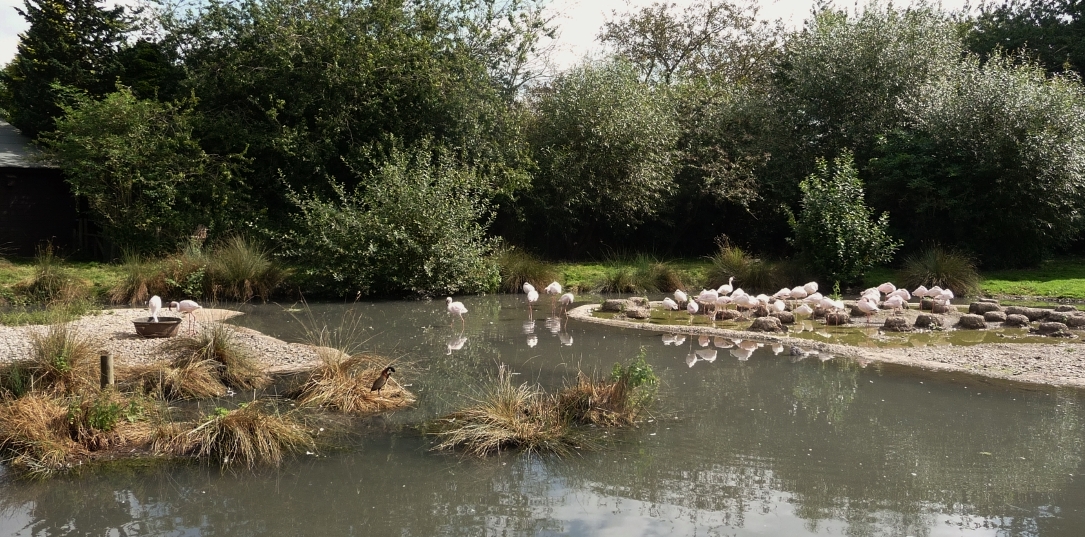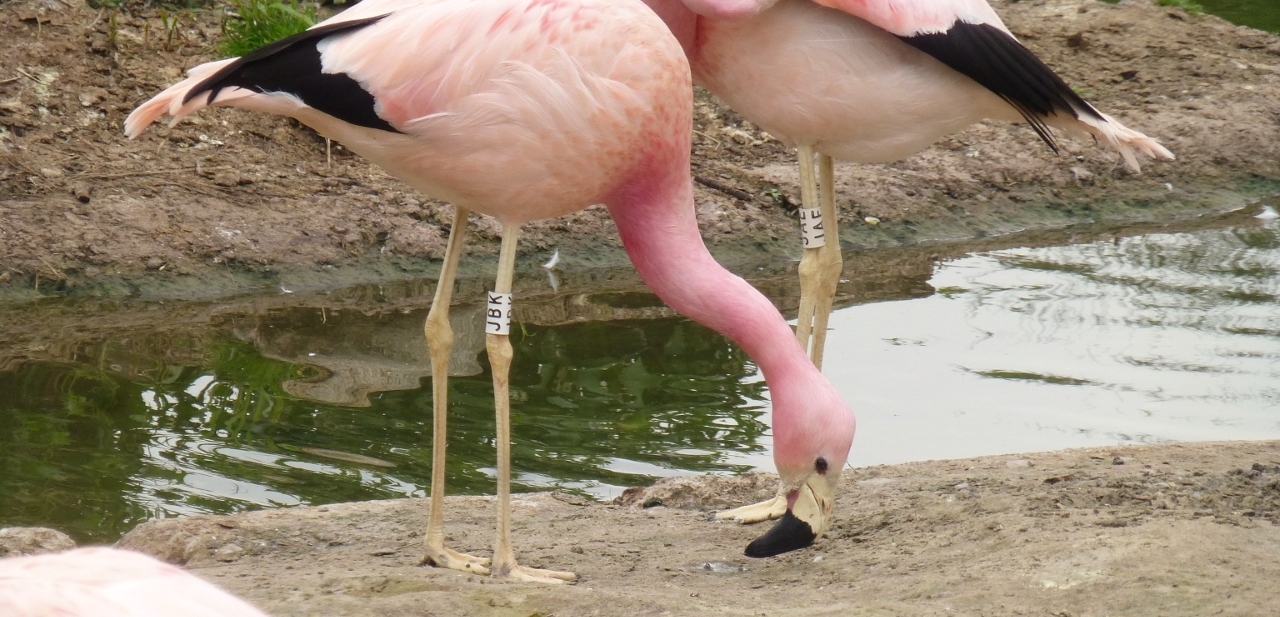New insights for January
Happy New Year flamingo followers.
Unfortunately I cannot really say much about flamingo behaviour at WWT for this first month of the year as the flocks are currently shut away in their houses, safe and warm, until environmental conditions improve and they can come back outside. So whilst the birds are not at all bothered by this (see the clip of the lesser flamingos below, the indoor feeding station for these birds means that they can forage naturally if they need to be inside), there is little to discuss in the way of interesting behaviour that is going on "live" as it were.
https://youtu.be/JBeCIJdlcbA
So I thought I would talk about some findings that have arisen from data that I am gradually ploughing through for my PhD. One of the things that has struck me from watching the birds for so long is the complexity of their relationships with each other. When I started this project I was unsure as to what I would see, or if there would be any long-standing "friendships" at all in these groups. But, as you can see from the photo below, the range of behaviours that flamingos do reveals a lot about who they like and who they don't.

So what am I noticing?
Firstly, some birds take longer to get over the loss of a friend than others. Flamingos live for a long time, but sadly old age catches up with us all eventually, and some birds have died during the course of my research. I have been able to see the effect of loss on the remaining individuals in the group. Two Andean flamingos, old birds, JAD and JBB have been lost during my data collection. JAD had a very special chum, JBF, whereas JBB was a more cantankerous flamingo and floated around with several other birds, with no specifically strong ties.
I know it's not very accurate or scientific, and very human-orientated, but I am going to talk about friendships between birds throughout this post. So forgive me for seeing the world of these birds with slightly less than objective eyes!
JBF has slotted in with some other flamingos in the group. He can be found with JBL, JBU, JBT and JAB. But none of these birds is the constant companion of his old friend. It seems that he is making new relationships in the flock but it is taking time. Hopefully these social bonds will become stronger and he will have found a new position in a new part of the flock. This year, we will be investigating how other birds might have been affected by the loss of JBB, if at all.

These friendships between the birds are not only long-standing but they also can survive upheaval or change to their environment. The Andean flamingos lived in the South American Pen with the Slimbridge flock of Chilean flamingos from 2008 to 2012. The first year of me studying the birds meant that these were a mixed group, but what was interesting to note is that there was very little interaction between the two species. The friendships that exist within the Andean flock survived the move into their new enclosure; likewise the relationships between the Chilean flamingos didn't change after the Andean flamingos moved out.

The lesser flamingos also moved around in 2012, from the Andean flamingo's current home to where the greater flamingo used to live (with the opening of Flamingo Lagoon in July 2012, the greater flamingos went into a sparkly new home). The lesser flamingo flock has changed its structure in this time, before and after its move. And this is something I will talk about in a future post. Needless to say, we can measure the number of times individual birds socialise, and use this as a measure of how happy they are. The lesser flamingos became more socially discerning in their new home, and therefore we can say that they are settled and happy.

Next up, some individuals change their affiliations over time and seek out new friends. There is a well-established trio in the Andean flock, JAA, JAE and JAC. They are sometimes joined by JAZ, who flits around with other birds too. Over the past year or so, another flamingo has been seen more and more regularly with the A,E,C crowd. JBK has been tagging on to what these three flamingos do, and is gradually becoming more of a fixed component of their little club. It seems that flamingos can make new friends, and build stronger friendships over time. It just relies on the personality of the bird making the new friend, and the new friend itself to be accepting.

The personality of these four flamingos is interesting. JAC and JAE have been seen together since I started my observations. They are calm, quiet birds. JAA was a regular acquaintance. When not scrapping with JAK, JAF or JBB, he would hang around with these two birds. He, JAA, wasn't too keen on many of the other birds. A few years back JAA was under the weather. He has since recovered and is back in the pink (bad joke, sorry). However, since his illness he is a different flamingo. Less angry, more tolerant; not so pushy, more relaxed around the other birds. Maybe he sees his life differently...?! This could be the reason why a new bird, JBK, has found it so easy to join up with these other flamingos.

I hope this has given you a taste of the view into the flamingo's world that I get from doing my research. There is a lot going on in these flocks, and the birds themselves tell us a great deal about how they feel about the groups they live in. Because of studying these behaviours, I was lucky enough to be asked to write a chapter for a new text book all about flamingo behaviour, biology and ecology- to explain why they are such incredibly social animals. The birds at Slimbridge feature heavily in my chapter, and they have revealed so much about the world of the flamingo. It shows how important these captive flocks are to science and to animal husbandry.



